The young Attila József and his mother lived in the 9th District on Lenhossék Street, Márton, Haller, Bokréta, Páva, Thaly Kálmán, today's Balázs Béla Streets – and of course on Ferenc Square. They lived in apartments and rooms, a kitchen, communal accommodation, a pub, a brothel, and a shop.
The mother, as a breadwinner, worked in cinemas, cleaned apartments, did laundry, sewing, and, if necessary, tried to sell the homemade work of others at the nearby Vásártér (now Haller Park). Attila was with her when he was not studying at a nearby school, playing with his friends, stealing firewood, or walking among the wagons of the Ferencváros railway station.
In March 1910, Attila and one of his older sisters, Etelka, moved to Öcsöd to Ferenc Gombai with the help of the National Child Protection League. In June 1912, the siblings returned home from Öcsöd. In August 1914, his eldet sister, Jolán, married Elemér Pászti, and the József family moved into the couple's apartment at 63 Üllői Road. In the summer of 1916, the family moved to the house at 11 Ferenc Square.
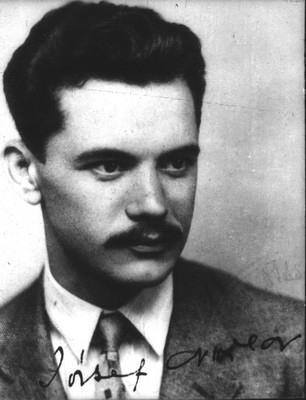
Attila József in 1933 (Source: Wikipedia)
In 1916, Attila enrolled in the primary school at 54 Üllői Road. This was when he wrote his first poems. In 1917, Jolán met dr. Ödön Makai, a lawyer. She first became an employee of his. Then a love affair developed between them. Jolán divorced Elemér Pászti and married Makai. In December 1919, Borbála Pőcze, who had been seriously ill for four years, passed away. In January 1920, Attila and Etelka moved into the Makai couple's home in Terézváros, at 3 Lovag Street.
The list shows how many places are connected to Attila József in one way or another. Twenty-two buildings are known to have been residences of the poet (several of which can still be found today), and another 13 sites are ingrained in his remembrance for different reasons. Even if it is impossible to present all of them in one article, the most important places are worthy of an imaginary walk. First, take a look at the houses that Attila József could have considered, albeit for a short time, his home.
Attila József was born on 11 April 1905 in the house at 3 Gát Street. He lived in his birthplace until he was three months old, yet the building has become symbolic in recent decades. On 11 April 1964, the Attila József Memorial Room was opened here, inaugurated by Lajos Kassák. In half a century, the exhibition has been renewed four times. The Ferencváros Local Council last opened the renovated building on 11 April 2015 and provided more space in the poet's memory than ever before.
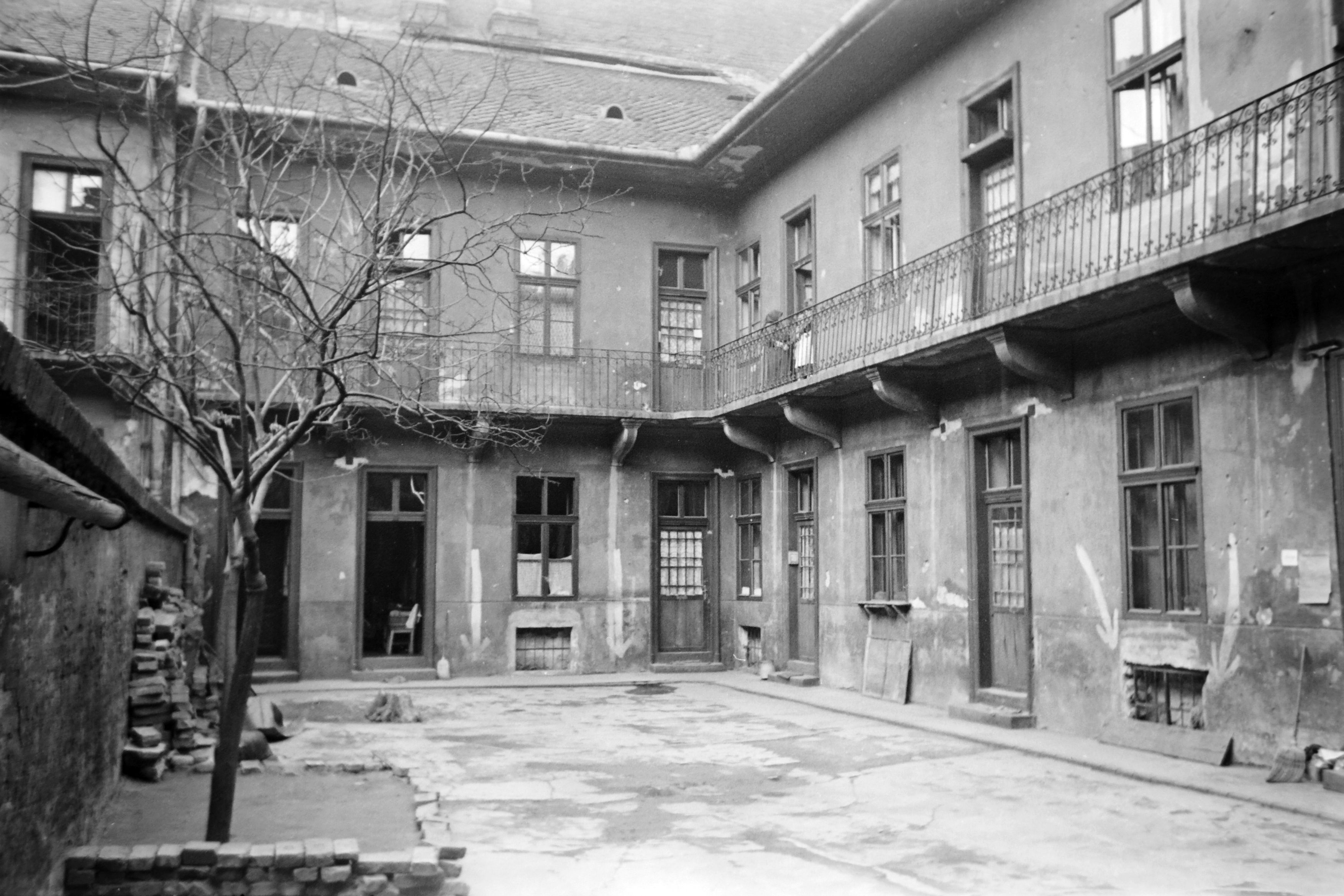
Courtyard of 3 Gát Street in 1949 (Photo: Fortepan/No.: 32838)
In June 1905, the family moved to 18 Szvetenay (Lenhossék) Street to soap maker Sándor Gerstl. Gerstl was the employer of Áron József, the poet's father. They had a good relationship, thanks to which the family lived there for almost two years.
In 1907, they moved into an apartment with a room and a kitchen at 8 Gát Street. They moved to a new residence after a year, at the nearby 24 Gát Street. Apartment No. 19 on the 1st floor became their home. In July 1908, Áron József left his family permanently. Attila József was three years old at the time. Borbála Pőcze first tried to find him with the help of the authorities, but after a several-week-long unsuccessful search, she was forced to take on casual jobs to support her three children. She tried sewing first, then put one of their rooms up for rent.
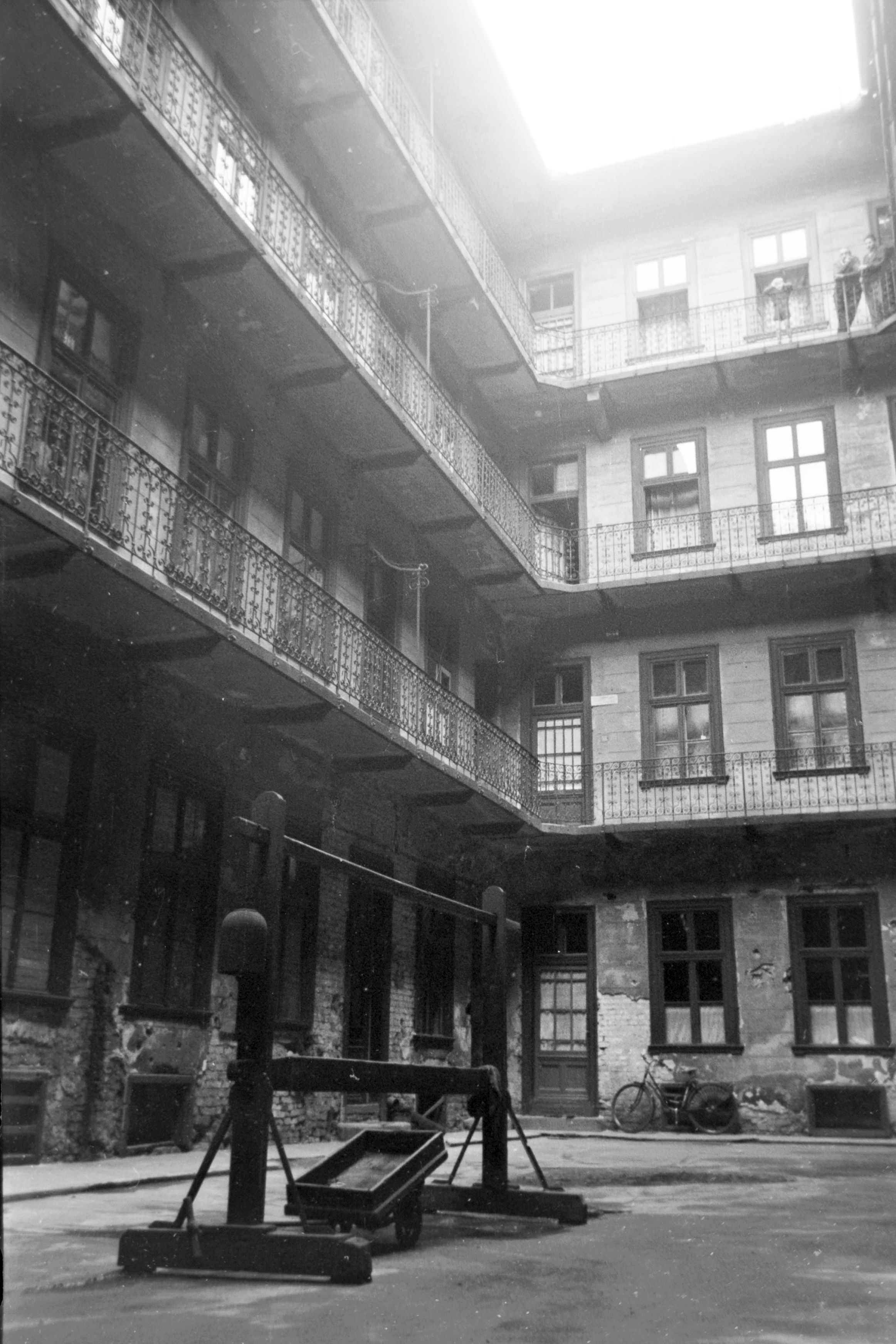
Courtyard of 24 Gát Street in 1949 (Photo: Fortepan/No.: 32847)

The facade of 24 Gát Street in 1999 (Photo: Ferencváros Local History Collection)
The attempt failed: due to rent arrears, Borbála Pőcze and her children moved to the closet of a pub on Páva Street in October 1908, then to 1 Márton Street. They only stayed here for a few months. The next stop was 15 Haller Street, where a mason gave them accommodation.
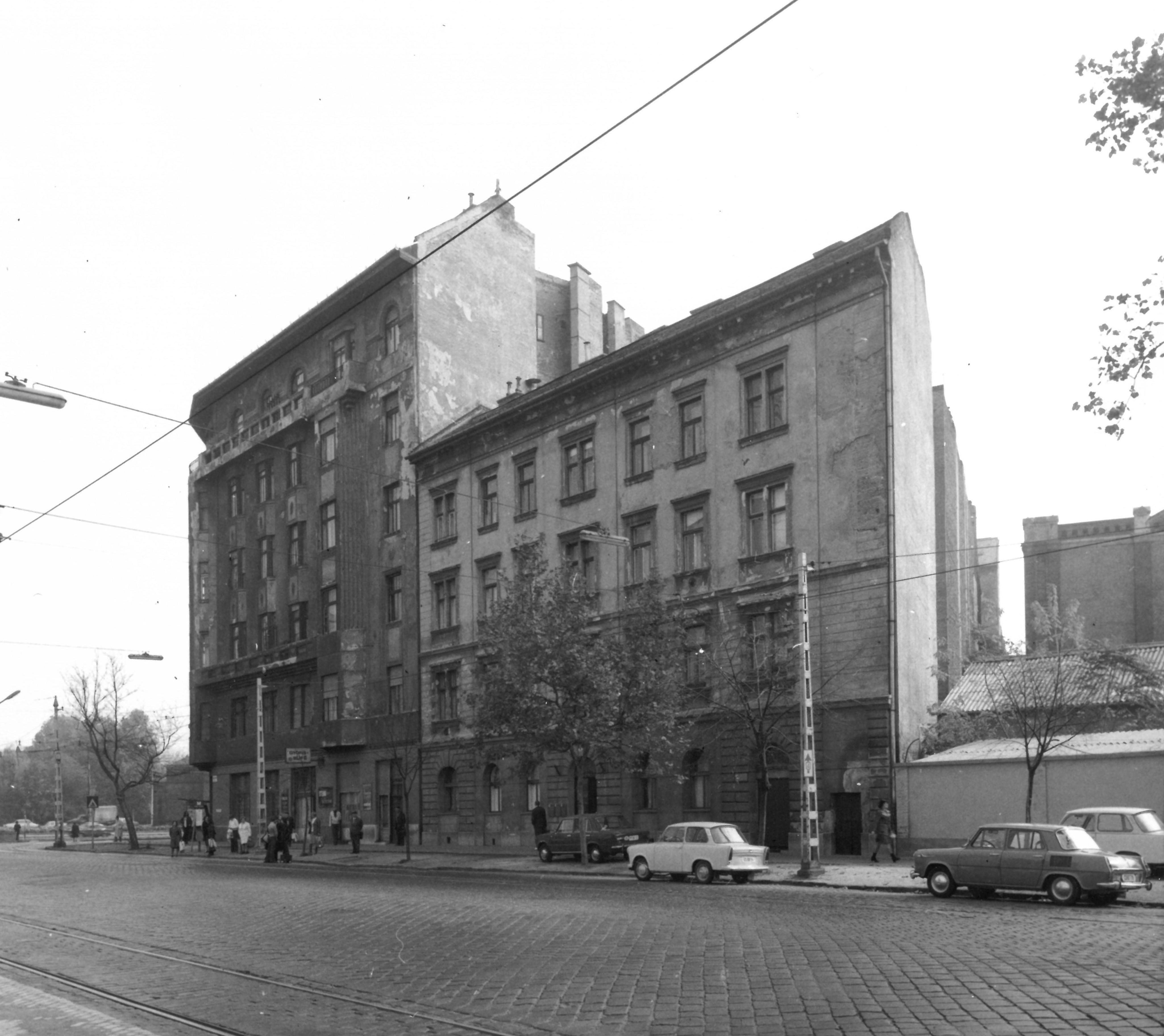
15 Haller Street in 1990 (Photo: Ferencváros Local History Collection)
After that, they found themselves in a communal accommodation on Lenhossék Street for a short time, and from February 1910, they lived at 5 Ferenc Square, in the kitchen of a fortune teller named Mészárosné who employed Borbála Pőcze. The scary ceremonies of the fortune teller caused great fear in the children, and eventually, their mother looked for a new place to live. She thought that she could not find a job and take care of his three children at the same time. Then came the mentioned two-year “exile” in Öcsöd for Etelka and Attila.
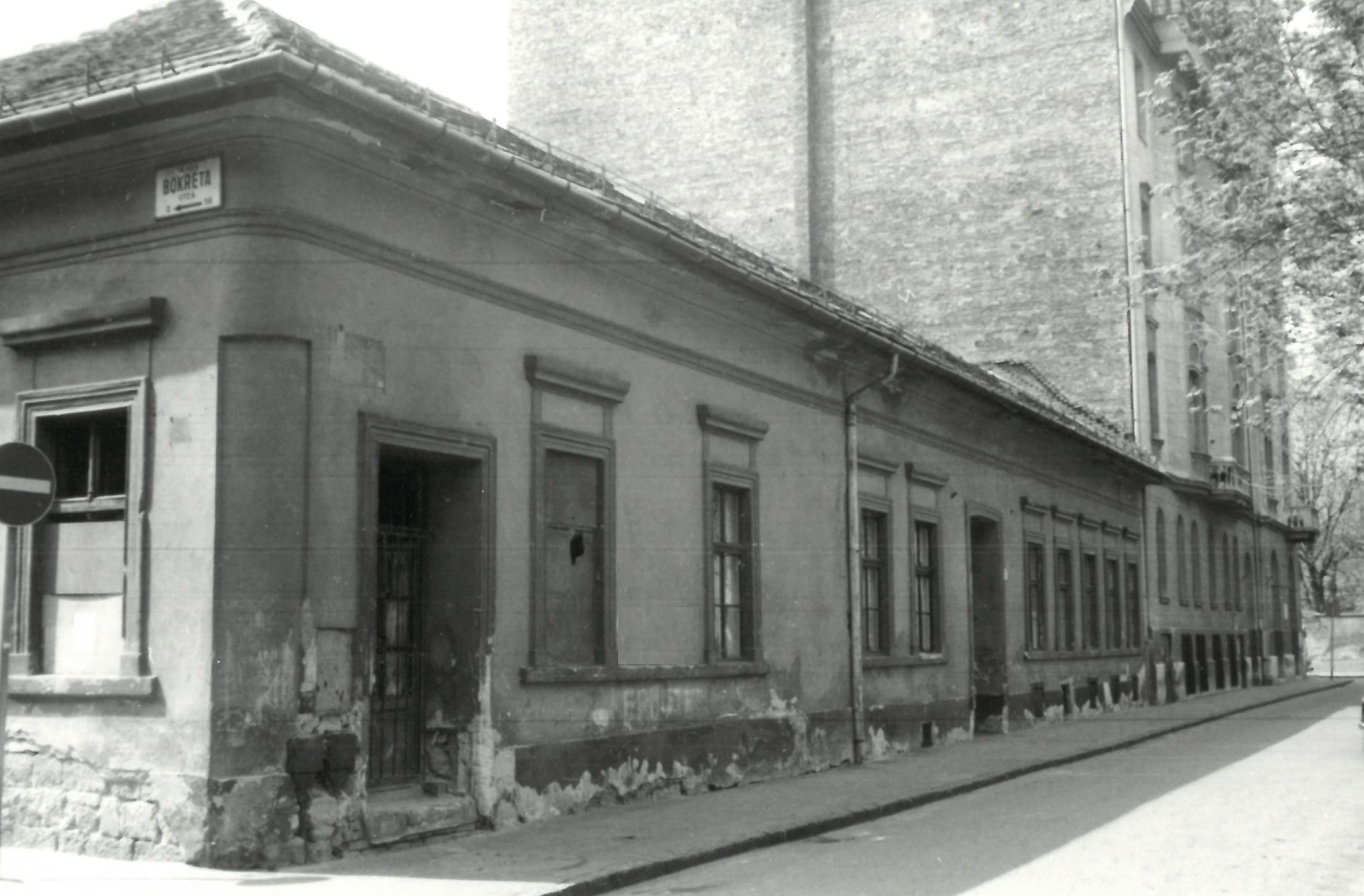
The building at 5 Ferenc Square around 1990; Attila József's family lived with the fortune teller in this building (Photo: Ferencváros Local History Collection)
In 1912, when they were able to return from Öcsöd, they were given a place to sleep in one of the flats at 11 Páva Street. In January 1913, they moved again to 15 Haller Street (where they had lived previously), but they already had a new residence at 8 Gát Street in June. In September, 15 Haller Street was listed on their school papers again. In 1914 they visited several places: the house at 40 Thaly Kálmán Street (today's 10 Balázs Béla Street), and in August 1914 they lived in the apartment of Jolán József's first husband, Elemér Pászti, at 63 Üllői Road.
In the following May, Jolán had a child, and the studio apartment proved too crowded for six people. Therefore, in the autumn of 1915, Borbála Pőcze, Etelka and Attila moved to 10 Bokréta Street. The frequent moves ended in the summer of 1916. Jolán József had a permanent and independent income at the time so that she could rent a studio apartment on the third floor of the residential house at 11 Ferenc Square. They lived here for four years; this may have been the quietest period of Attila József's childhood when the constant fear of eviction did not hang over their heads.
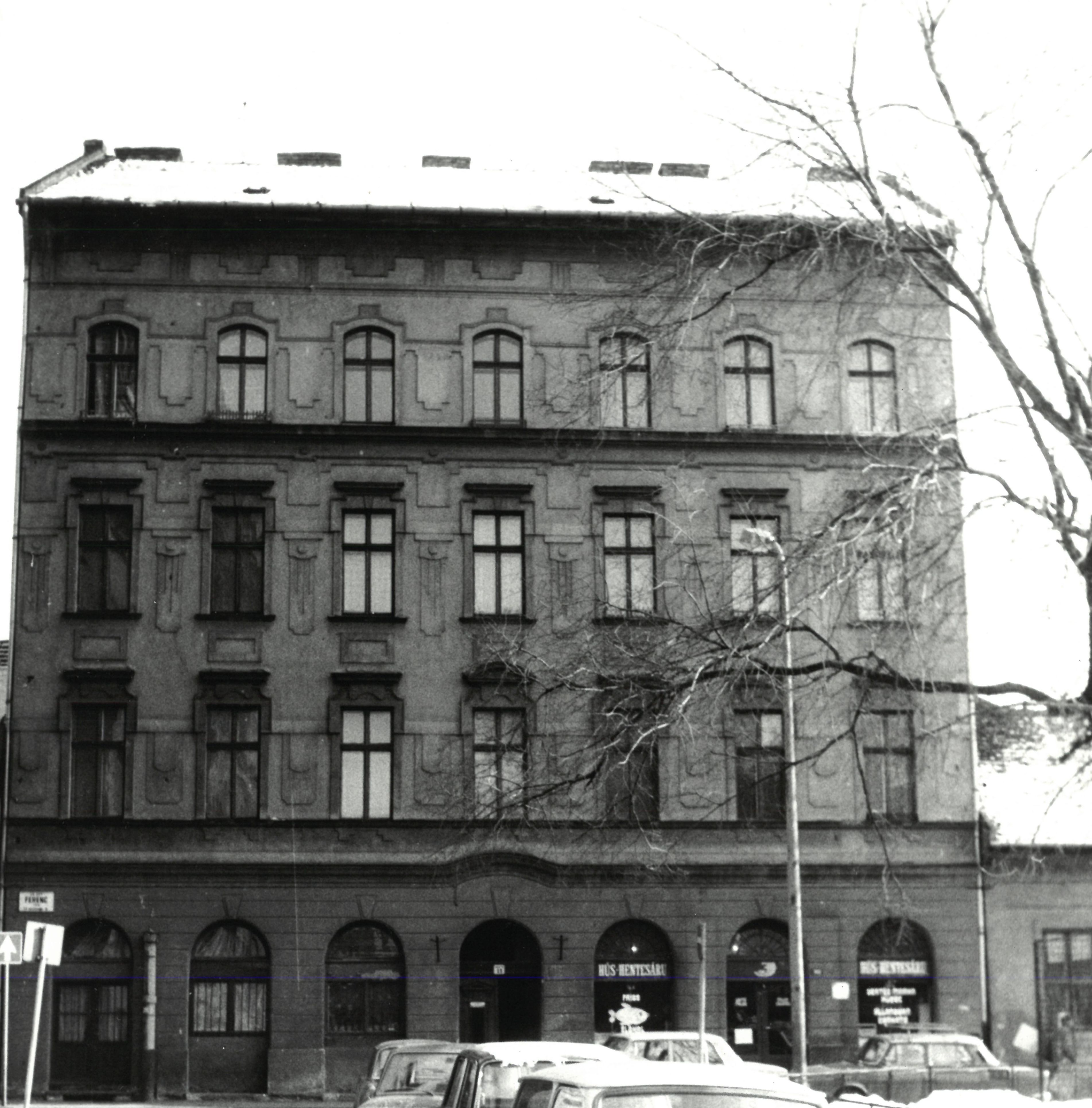
11 Ferenc Square in 1990 (Photo: Ferencváros Local History Collection)
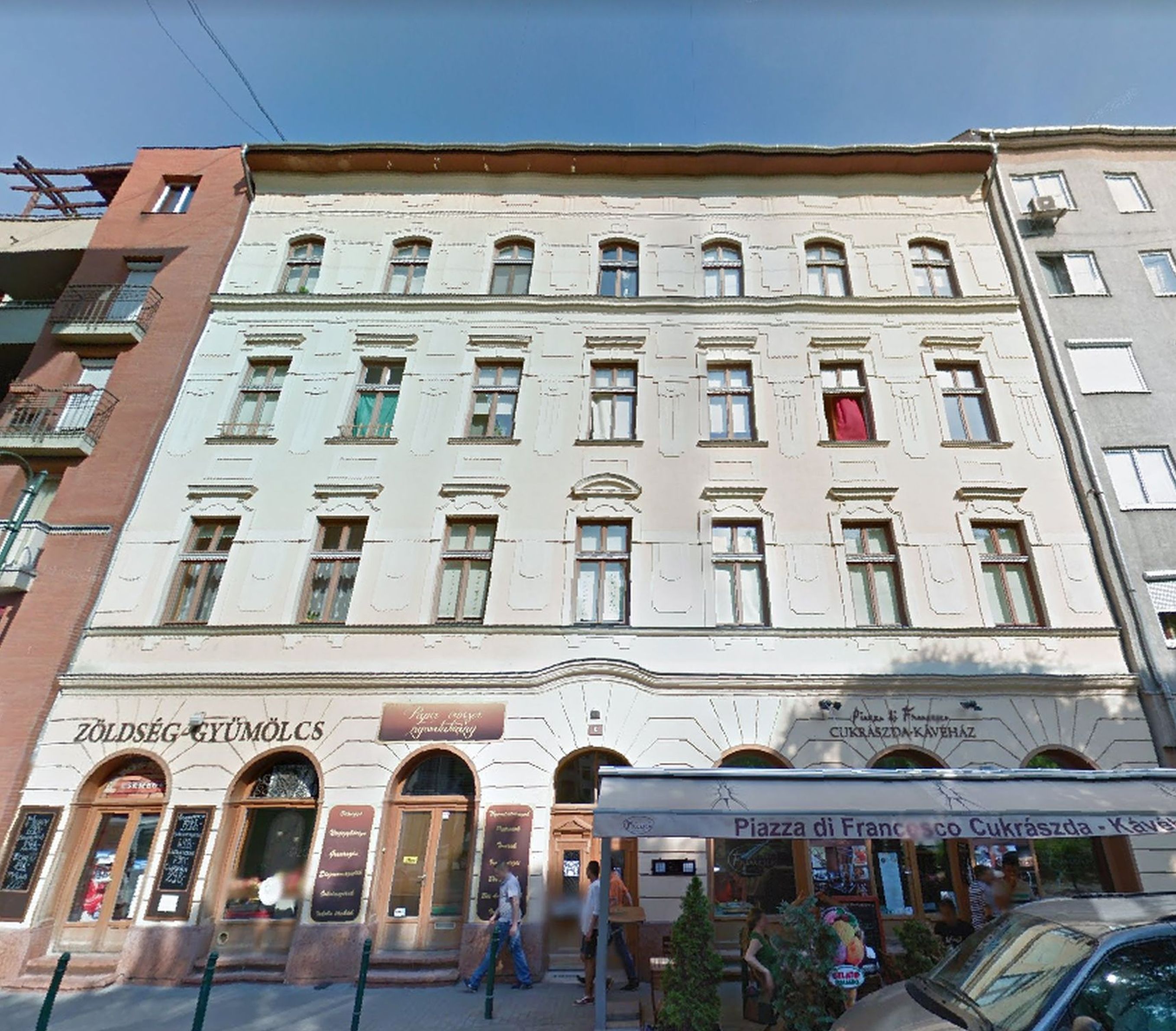
11 Ferenc Square in 2019 (Photo: Ferencváros Local History Collection)
Moving on to the locations in Ferencváros that left a deep mark on the poet. It is no accident that the most important place is Ferenc Square as he lived here for the longest time. It had everything that might have been interesting to a boy.
There was a cinema called Ferencz Mozgó under 4 Ferenc Square, where his mother cleaned, and he could watch a lot of movies. At 13 Ferenc Square was a small coffee shop, where the mother bought coffee and milk for the three of them in the morning. Members of the József family often visited the pawnshop at 12 Ferenc Square. The square itself was a place of joy. Attila spent a lot of time here with his peers.
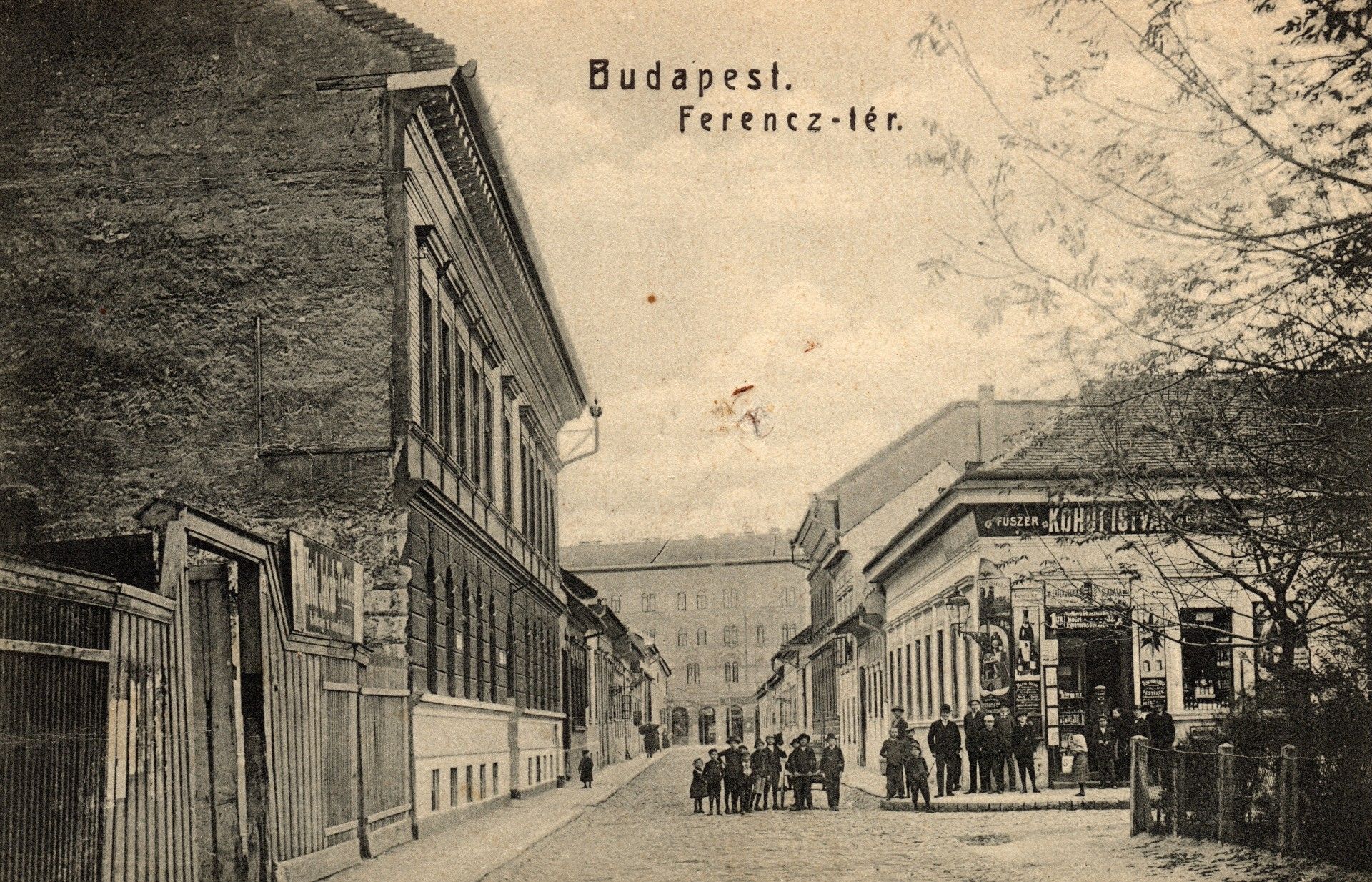 Ferenc Square on a postcard around 1910 (Photo: Ferencváros Local History Collection)
Ferenc Square on a postcard around 1910 (Photo: Ferencváros Local History Collection)
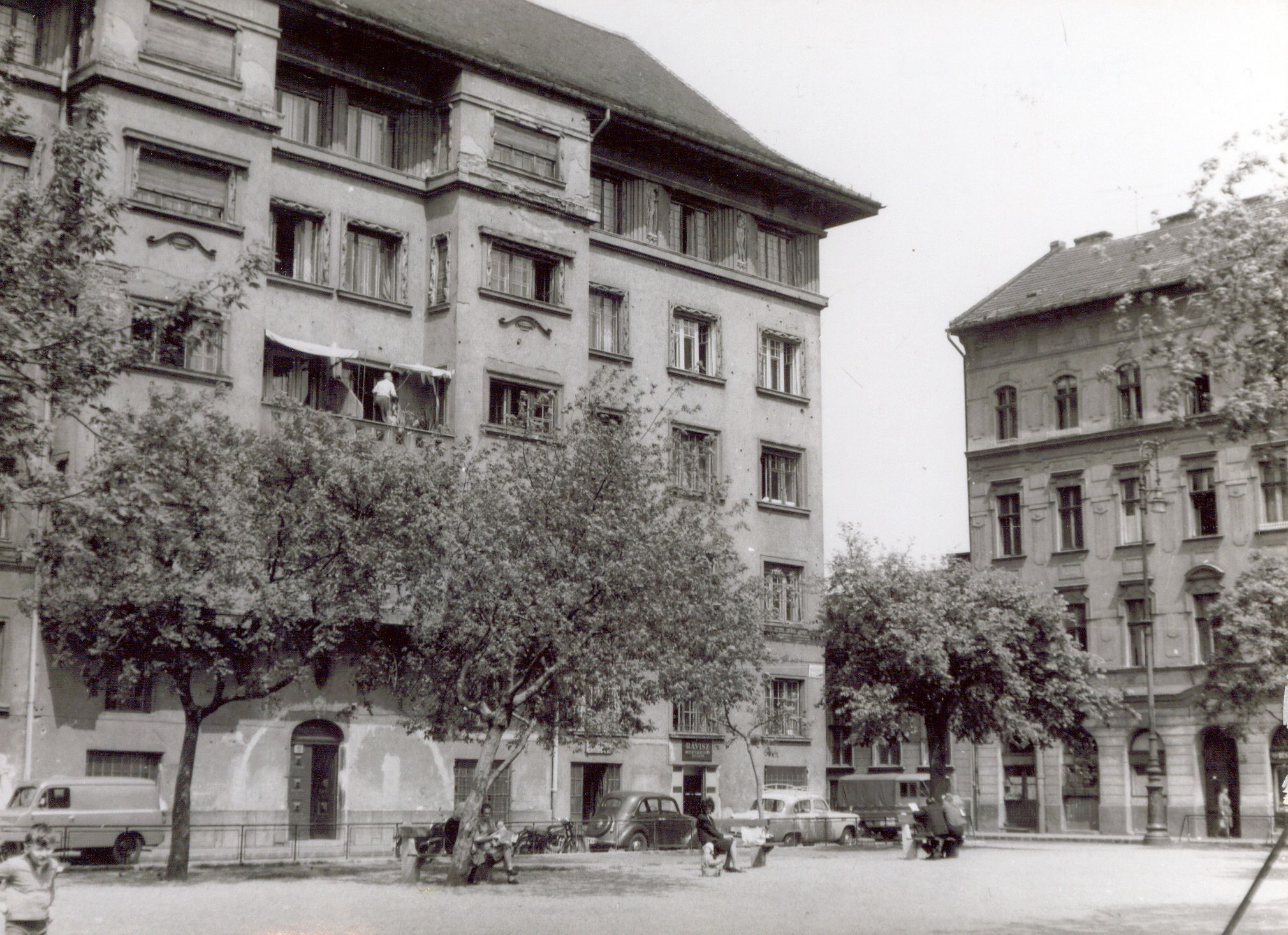
Ferenc Square in 1965, 11 Ferenc Square to the right (Photo: Ferencváros Local History Collection)
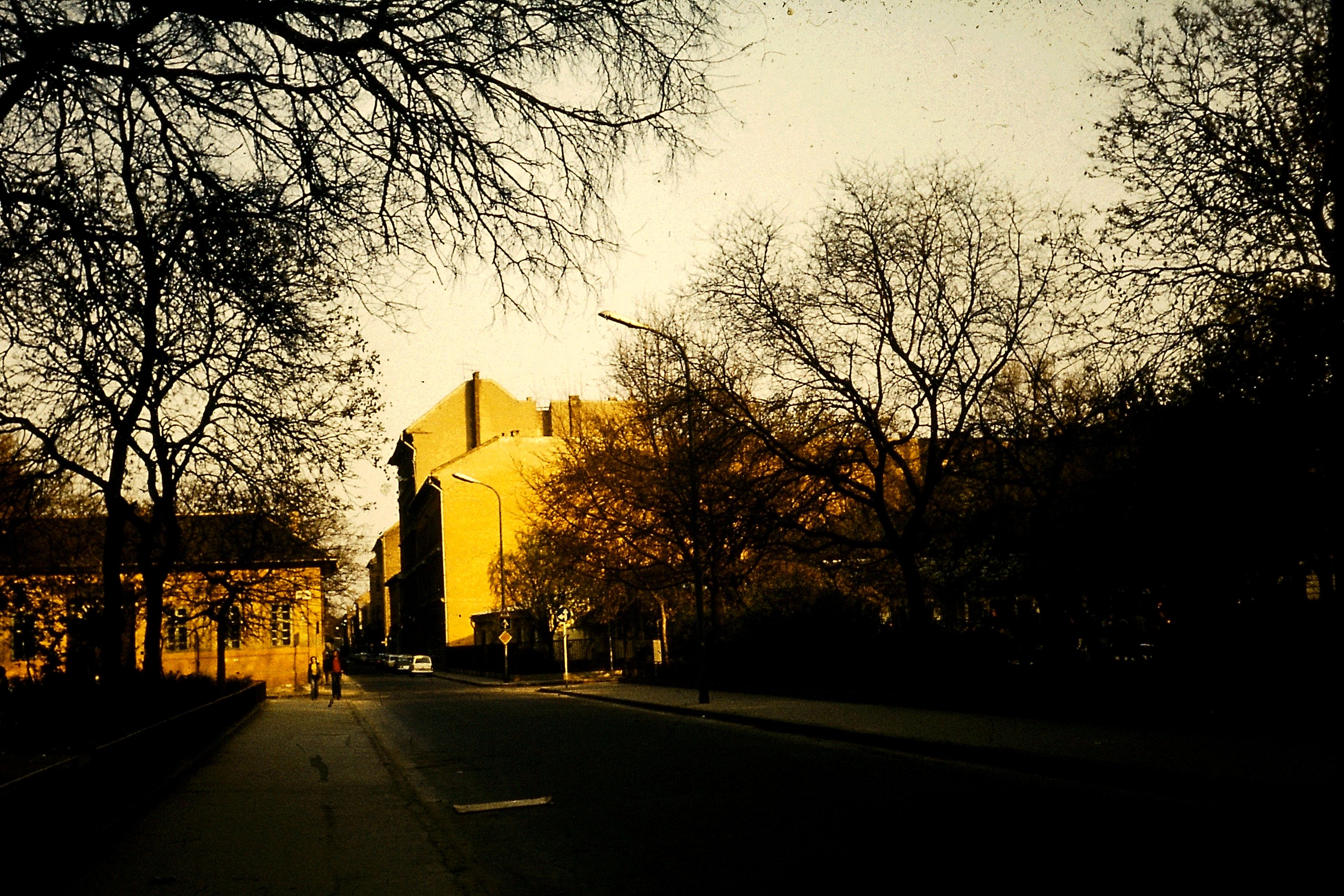
Ferenc Square around 1980 (Photo: Ferencváros Local History Collection)
Attila József was attracted to the world of cinema. It was not surprising, as his mother cleaned in the Világ cinema on the corner of Mester Street and Haller Street, the Projectograph cinema on the corner of Üllői Road and Berzenczey Street and the Haller Mozgó at 54 Haller Street. Of course, her son often kept her company.
The Országos Vásártér was located on the other side of Haller Street, where they held thematic fairs and daily market, and where Attila spent a lot of his time. The Ferencváros railway station was the place to buy firewood. He liked to climb onto the nearby Southern Railway Bridge and watch the barges on the river and the trains going across the bridge.
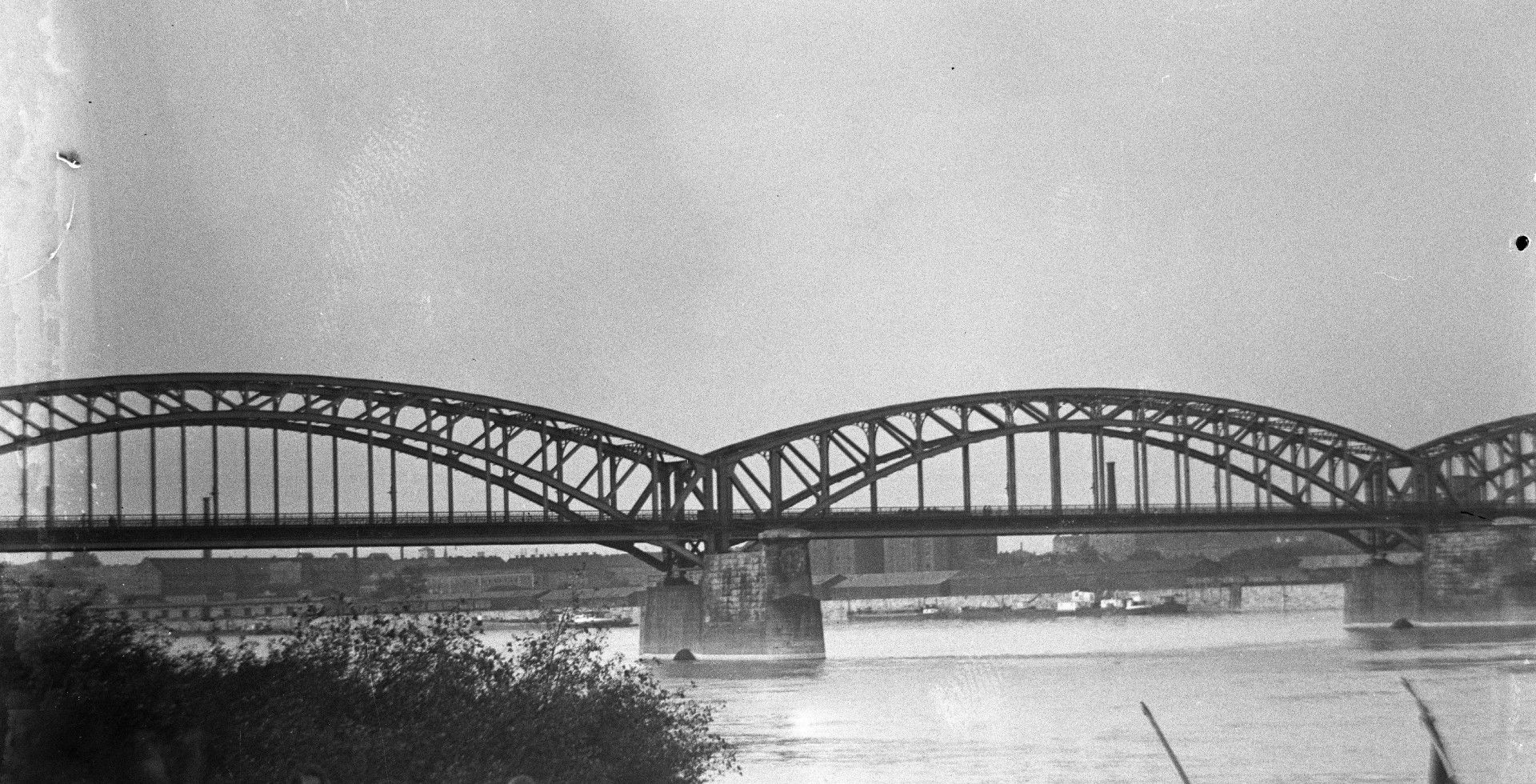
The Southern Railway Bridge, onto which the child Attila József climbed many times, taken around 1920 (Photo: Fortepan)
Fővám Square was important because of the Main Market Hall. He tried to sell coloured paper windmills in front of the hall and offered himself as a load carrier to earn some money and give it to his mother. He often turned up at the Reformed Church in the nearby Kálvin Square because his mother (being Reformed) always took him to attend a service when she had time.
The schools of Ferencváros are also of note: he completed the second, third and fourth years in the primary schools at 19 Mester Street and 67 Mester Street – he alternated between the two schools every semester. He continued his primary school studies as a 9th District resident, but he lived at 53 Üllői Road in Józsefváros.
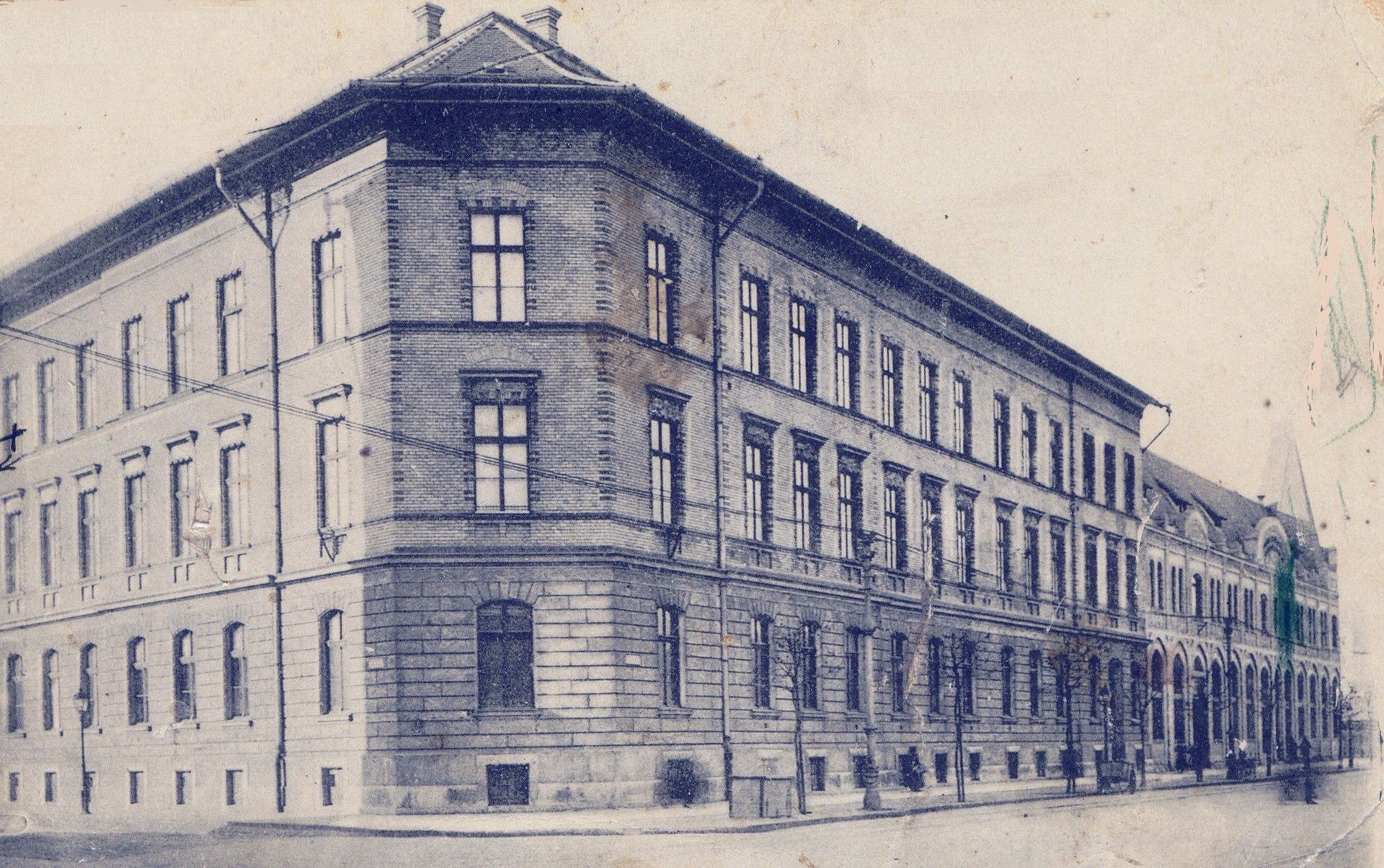
The primary school at 19 Mester Street in 1912 (Photo: Ferencváros Local History Collection)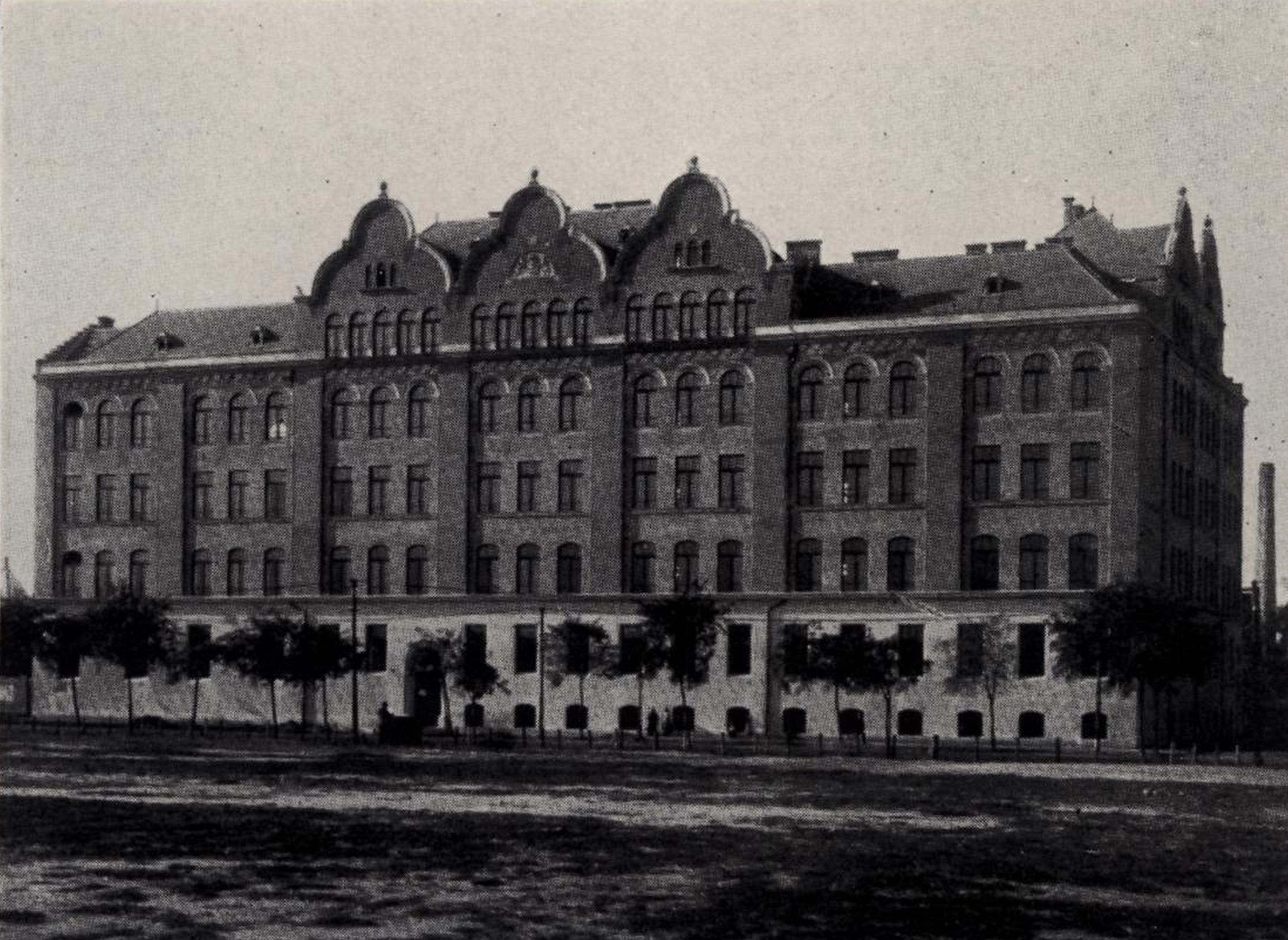
The primary school at 67 Mester Street in 1912 (Photo: FSZEK Budapest Collection)
When Ödön Makai, a successful lawyer in Pest, moved his wife's siblings, Etelka and Attila, into his apartment on Lovag Street in Terézváros, Ferencváros disappeared from Attila's life in one fell swoop. But the memories lasted forever, coming up occasionally. They appeared in poems or conversations with friends or siblings, and often when his psychoanalyst tried to help him understand himself.
If one walks around Ferenc Square, several houses can be seen where a small memorial plaque indicates that even if only for a few months, the little boy who became a colossus of Hungarian modern poetry lived there. They help the remembrance for all who want to know as much as possible about Attila József.
Cover photo: Ferenc Square on a postcard around 1910, on the right, 5 Ferenc Square (Photo: Ferencváros Local History Collection)

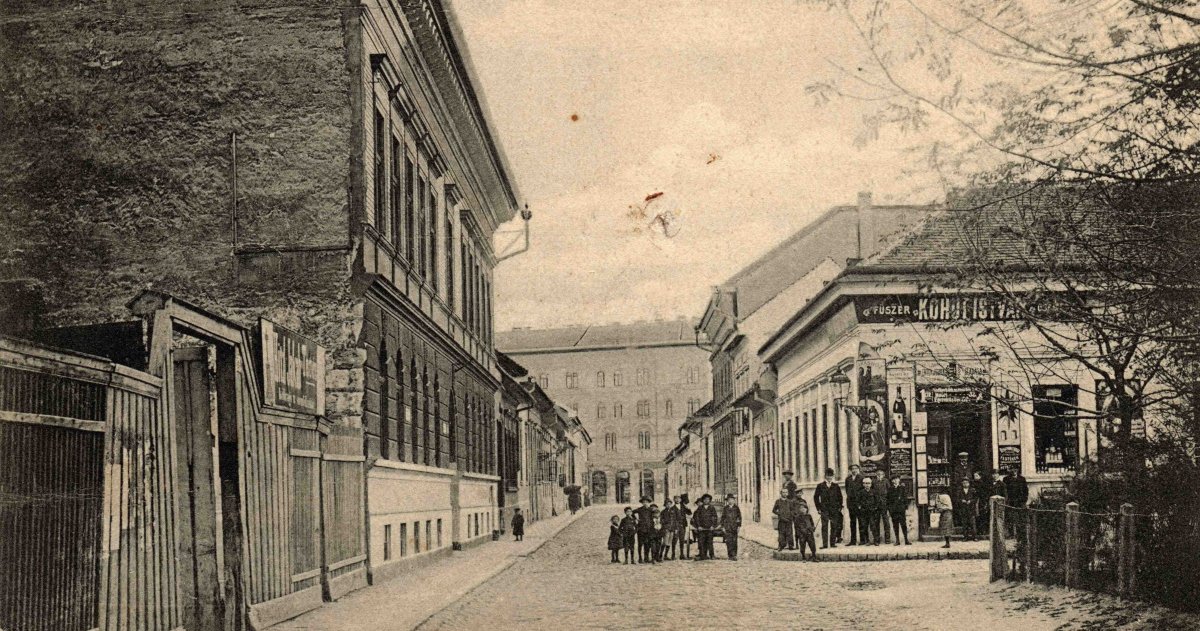



































Hozzászólások
Log in or register to comment!
Login Registration